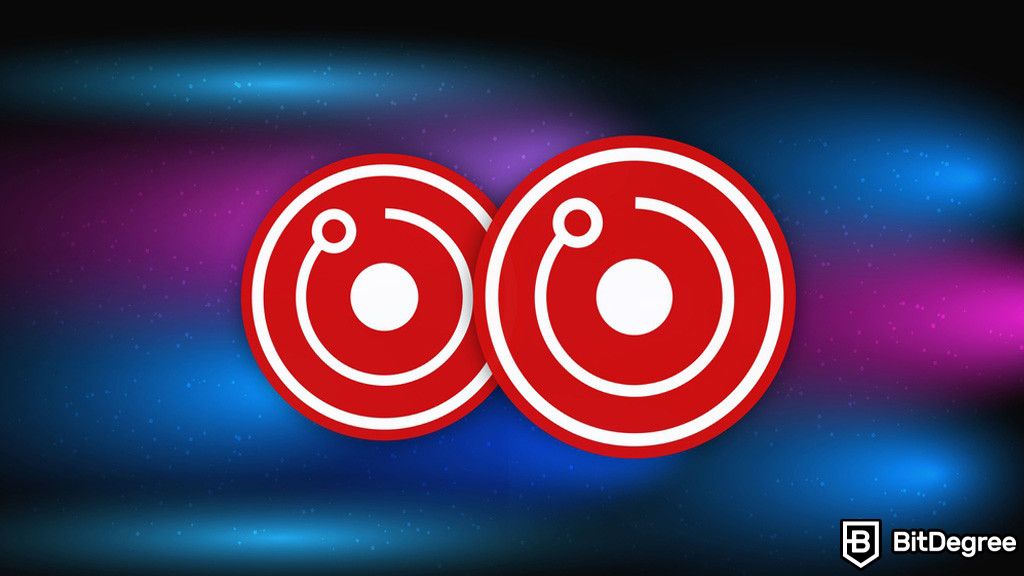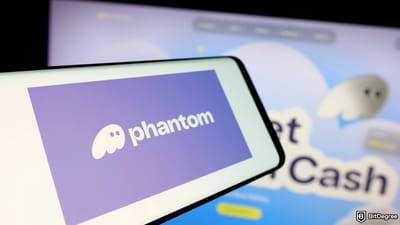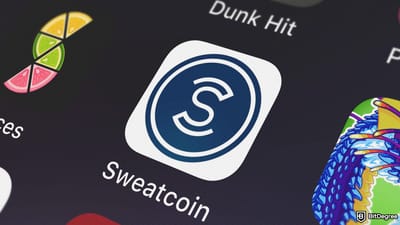Key Takeaways
- Render crypto leverages a decentralized network to provide cost-efficient and fast rendering solutions across various industries like gaming, film, and architecture.
- The Render Network's tiering system and the roles of Node Operators and Creators ensure efficient allocation of resources, making high-quality rendering accessible to more users.
- Despite its benefits, Render crypto faces challenges such as market volatility, competition, and regulatory hurdles, but remains a promising technology for revolutionizing digital content creation.
Stop overpaying - start transferring money with Ogvio. Sign up, invite friends & grab Rewards now! 🎁
If you've been keeping up with the latest trends in the crypto world, you might have seen Render crypto mentioned on popular exchanges like Binance, Kraken, and Kucoin. But "what is Render crypto" really all about? And how does it stand out from the myriad of other cryptocurrencies available today? I'll break it all down for you.
In this article, I'll explore what Render crypto is, diving into its purpose, the technology behind it, and its real-world applications. We'll also discuss how to join the Render Network and how to buy Render crypto.
From the basic concepts to the nitty-gritty details of its technological framework, I'll walk you through everything you need to know. Whether you're an investor curious about "what is Render token" or someone interested in how it works, this guide will provide you with a comprehensive understanding of what this crypto project is. So, let's embark on this journey to uncover the fascinating world of Render crypto together!

Did you know?
Subscribe - We publish new crypto explainer videos every week!
What Is a Neobank (And Should You Use It)?
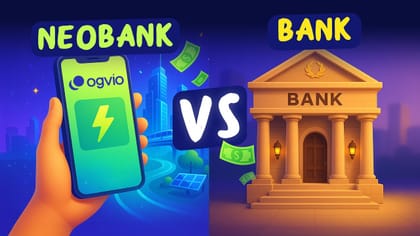

Table of Contents
- 1. What is Render Crypto (RNDR)?
- 2. The Technology Behind Render Crypto
- 2.1. Who Developed the Render Network
- 2.2. Node Operators and Creators
- 2.3. Render Network Pricing
- 2.4. The Render Network Tiering System
- 2.5. Blockchain Integration
- 3. How the Render Network Works
- 4. Use Cases of Render Crypto
- 4.1. Gaming Industry
- 4.2. Film and Animation
- 4.3. Architecture and Design
- 4.4. Advertising and Marketing
- 4.5. Virtual Reality (VR) and Augmented Reality (AR)
- 4.6. Scientific Research
- 5. Benefits of Using Render Crypto
- 5.1. Cost-Efficiency and Speed
- 5.2. Decentralization and Security
- 5.3. Impact on Creative Industries and User Empowerment
- 6. Challenges and Criticisms of Render Crypto
- 6.1. Market Volatility
- 6.2. Technical Challenges
- 6.3. Regulation
- 6.4. Competition
- 6.5. Scalability
- 6.6. Network Effects
- 7. How to Get Started with Render Crypto
- 7.1. How to Get Started as a Node Operator
- 7.2. How to Get Started as a Creator
- 7.3. How to Buy Render Token
- 8. Conclusions
What is Render Crypto (RNDR)?
To immediately answer the question, the Render Token (RNDR) is the utility token native to the Render Network. Its first public sale was launched in October of 2017, while the private token sale was held in early 2018, in which the Render Token price was set at around $0.25.
Latest Deal Active Right Now:The RNDR token itself is based on the ERC-20 token standard developed on the Ethereum blockchain. However, the Render Network is currently in the process of migrating its platform and RNDR token to the Solana blockchain.
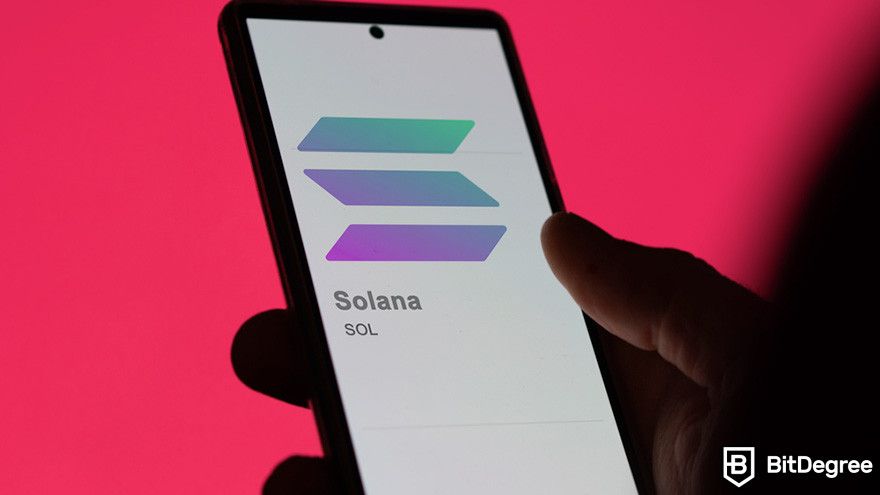
There is a maximum supply of 536,870,912 RNDR tokens. This total supply was derived from the predicted supply and demand over the next 10 years with the following allocations:
- 65% - Escrow;
- 25% - Sold;
- 10% - Render Reserve.
The core purpose of the Render token is to incentivize Render Network users who lend their idle GPU powers to other users so they can render their visual projects. This can include 3D models, motion graphics, or highly realistic AI-generated images; basically, anything that requires a significant amount of GPU power to accomplish.
The amount these users would get depends on the job’s level, duration, and complexity. Because of that, the native RNDR token becomes essential because it is used to access this decentralized rendering service.
The Technology Behind Render Crypto
To properly answer what is Render crypto, we need to understand the underlying platform behind it: the Render Network. This network is at the heart of what makes Render crypto unique and powerful. Let’s dive into the key components and technological features that define the Render Network.
Who Developed the Render Network
The Render Token crypto project was launched in 2016 by Jules Urbach. The Render Network is backed by OTOY, which was also co-founded by Jules Urbach. OTOY is the parent company of the Render Network, which was launched in 2008.
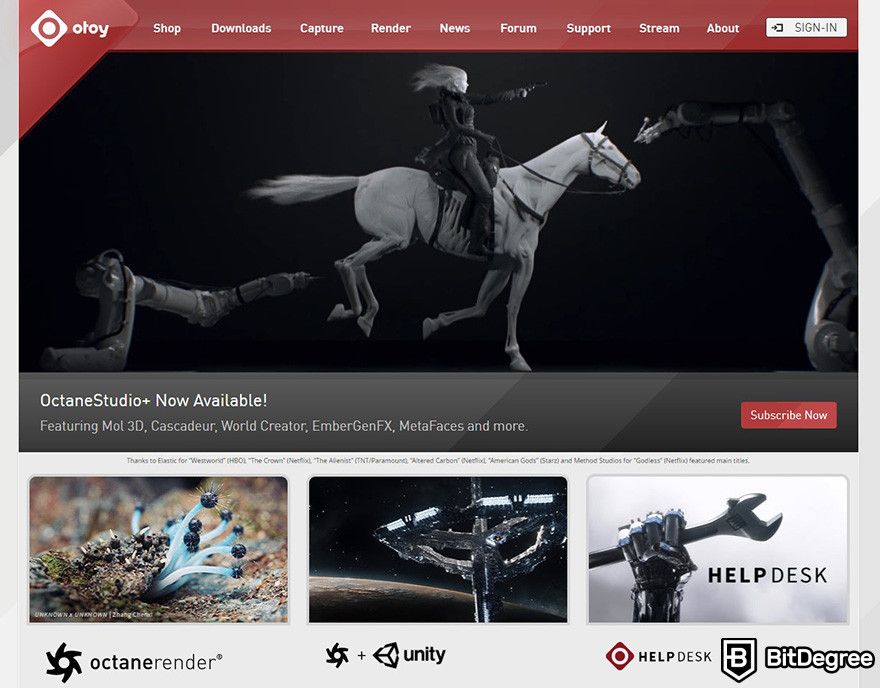
It is a GPU-based cloud graphics company located in Los Angeles, California. It ensures that creators lacking resources for rendering can complete their projects by borrowing computing power at a reasonable price.
Node Operators and Creators
The Render Network thrives on the collaboration between Node Operators and Creators. These two roles are essential in answering the question, "What is Render crypto?"
- Node Operators – these are the backbone of the Render Network. They provide the necessary computational power to process rendering tasks. These operators run powerful hardware setups, which they rent out to the network. In return, they earn RNDR tokens for their contributions. By decentralizing the computational workload, the network can handle massive rendering tasks more efficiently than traditional centralized systems.
- Creators – these are the users who need rendering services. They can be game developers, filmmakers, architects, or any digital artist requiring high-quality rendering. Creators submit their rendering jobs to the network, which are then distributed to Node Operators based on the tiering system. By using the Render Network, Creators can access powerful rendering capabilities without investing in expensive hardware themselves.
The Render Network allows Creators to monetize their rendering projects making it a win-win solution for both Node Operators and Creators.
Render Network Pricing
As I mentioned earlier, the main way to access the Render Network is by using the RNDR token. However, Creators can also get rendering services through the network using the Render Credit which can be purchased with fiat currency.
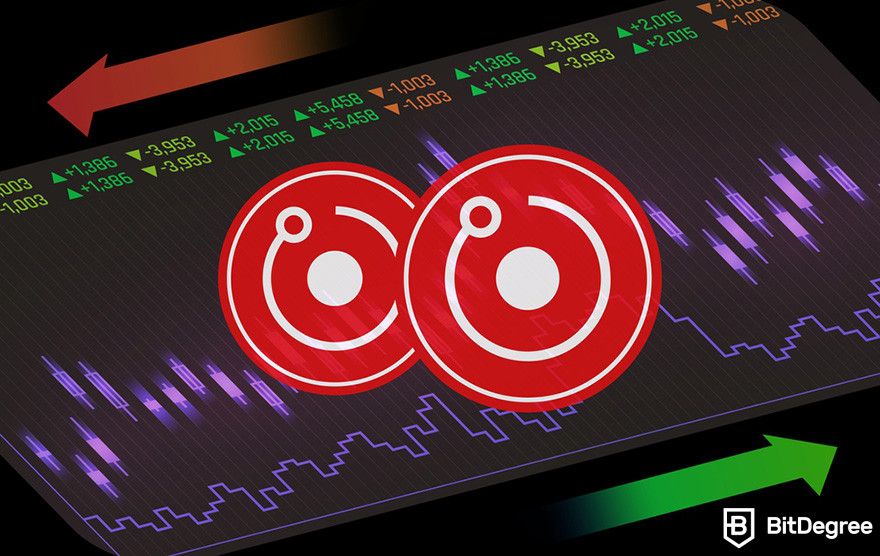
Both the RNDR token and credit are mapped to a unit of work called OctaneBench, a benchmarking tool provided by OTOY, which determines the network’s tiering system by defining computing power.
The only difference is that the Render Credit is non-exchangeable and is exclusively used to purchase rendering services. Even though RNDR Credits are bought with fiat, Node Operators are still paid with RNDR Tokens. This is because a single RNDR Credit is backed by approximately 4 RNDR Tokens.
The Render Network Tiering System
The Render Network operates on a sophisticated tiering system designed to optimize rendering tasks efficiently. This system categorizes Node Operators based on their GPU capabilities. By doing so, the network ensures that each task is matched with the appropriate level of computing power, maximizing both speed and cost-effectiveness. Currently, the Render Network implements the following tiering system:
| Tier | Description |
|---|---|
| Tier 2 (Priority) | For 100 OBh/1 RNDR Token or 400 OBh/1 RNDR Credit, Tier 2 nodes provide more power and can handle larger and more complex scenes, or render scenes at faster average speeds than Tier 3. |
| Tier 3 (Economy) | At a price of 200 OBh/1 RNDR Token or 800 OBh/1 RNDR Credit. It is recommended that you do not utilize Tier 3 when rendering work on a tight deadline, as rendering queue priority and requisite node power are not guaranteed. |
Table: Currently available tiering system in the Render Network.
The Render Network is also currently developing a new tier called “Trusted Partners” which is projected to be the highest tier in the network, providing the most premium rendering capabilities.
When you ask, "What is Render crypto?" you're essentially inquiring about this highly organized, decentralized system that leverages blockchain technology to distribute rendering jobs globally. This tiering system is a game-changer, providing a seamless experience for users who need high-quality rendering without the traditional overhead costs.

Did you know?
Subscribe - We publish new crypto explainer videos every week!
4 Ways to Turn Fiat to Crypto VS Crypto to Fiat (Easily Explained)


Blockchain Integration
A crucial aspect of understanding what is Render crypto involves looking at its blockchain integration. The Render Network uses blockchain to ensure transparency, security, and decentralization. Every rendering task and transaction is recorded on the blockchain, creating an immutable ledger that prevents fraud and enhances trust among users.
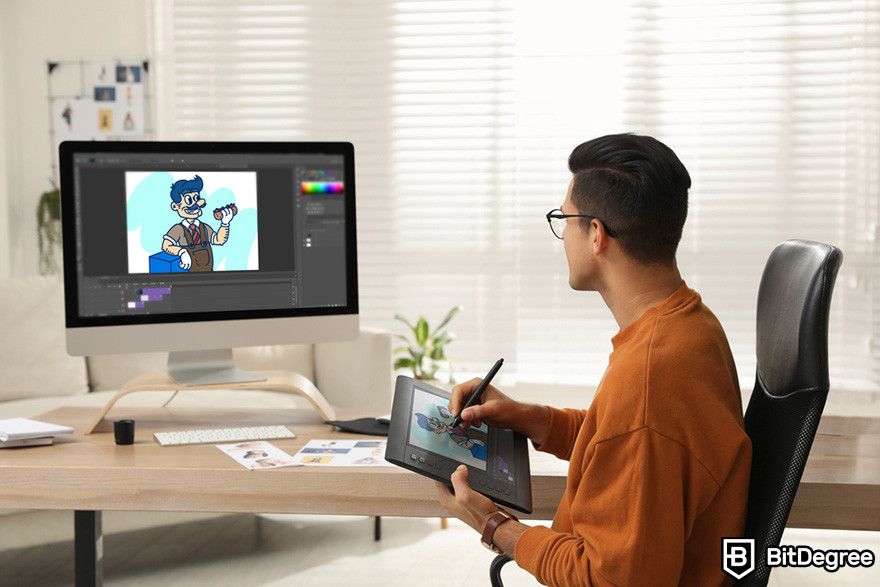
Blockchain technology also facilitates the seamless exchange of RNDR tokens between Node Operators and Creators. This system not only makes transactions transparent but also reduces the risk of payment disputes.
The Render Network's tiering system, the roles of Node Operators and Creators, and the integration of blockchain technology all come together to create a robust and efficient platform. So, the next time you think about “What is Render crypto?”, remember it’s not just a token, but a comprehensive network designed to revolutionize digital rendering.
How the Render Network Works
To grasp "what is Render crypto" in action, let me walk you through the process step by step of using the Render Network. It all starts with Creators uploading their designs or projects to the Render Network. These designs come with specific data and requirements, which, once rendered, turn into high-resolution images or videos. The OctaBench then determines the required GPU power for the project as well as the price associated with the project completion.
Once a project is submitted, the workload is distributed among the available GPUs. The chosen GPU then gets to work, rendering the design and producing the final output. This output is verified through a system called “Proof of Render,” similar to the consensus mechanism where the majority of parties eventually agrees to the same reality[1].
Finally, content creators pay the GPU providers in RNDR tokens. This step is particularly crucial as it reflects the complexity and resource usage of the rendering task. So, when you're wondering "What is Render crypto?" and "What is Render token?", it's all about this efficient, decentralized process that benefits both creators and GPU providers.
Use Cases of Render Crypto
When trying to understand "What is Render crypto?", it's essential to look at its practical applications. The Render Network offers a wide range of use cases that benefit from its decentralized, efficient rendering capabilities. Let's explore some of these use cases in detail.
Gaming Industry
The gaming industry is a massive beneficiary of the Render Network. Game developers often require high-quality graphics and detailed environments, which can be resource-intensive and costly to produce. By using the Render Network, developers can offload these demanding rendering tasks to Node Operators, who provide the necessary computational power.
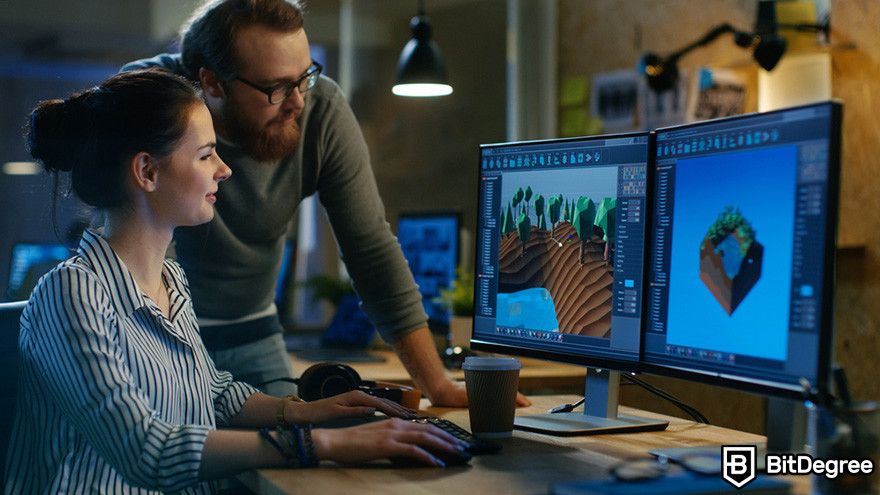
This not only reduces costs but also speeds up the development process, allowing creators to focus more on gameplay and less on rendering issues. When game developers ask, "What is Render crypto?" they see it as a game-changing tool that enhances their workflow.
Film and Animation
Film and animation studios are always on the lookout for ways to produce high-quality visual effects (VFX) and animations without breaking the bank. The Render Network offers a solution by distributing the rendering workload among a network of powerful GPUs. This enables studios to create stunning visuals more efficiently.
Imagine being able to render complex scenes in a fraction of the time it would typically take. For filmmakers and animators, "What is Render crypto?" translates to faster turnaround times and reduced production costs, making it an invaluable asset.
Architecture and Design
Architects and designers can also benefit significantly from the Render Network. Creating detailed architectural visualizations and designs requires substantial computing power, especially for large-scale projects. By leveraging the decentralized network, architects can render their designs more quickly and cost-effectively.

This allows them to present their ideas to clients in a more timely and visually appealing manner. So, when you think about "What is Render crypto?" consider its impact on making architectural visualization more accessible and efficient.
Advertising and Marketing
In the advertising and marketing world, visual content is king. High-quality renderings can make a significant difference in the effectiveness of a campaign. The Render Network allows marketers and advertisers to create stunning visuals without the hefty price tag of traditional rendering methods.
This opens up new possibilities for creative content, enabling brands to stand out in a crowded market. When marketers ask, "What is Render token?" they see it as a way to access powerful rendering capabilities that can elevate their campaigns.
Virtual Reality (VR) and Augmented Reality (AR)
The virtual reality (VR) and augmented reality (AR) industries are growing rapidly, with increasing demand for high-quality, immersive experiences. Rendering these experiences requires immense computational power, which the Render Network can provide.
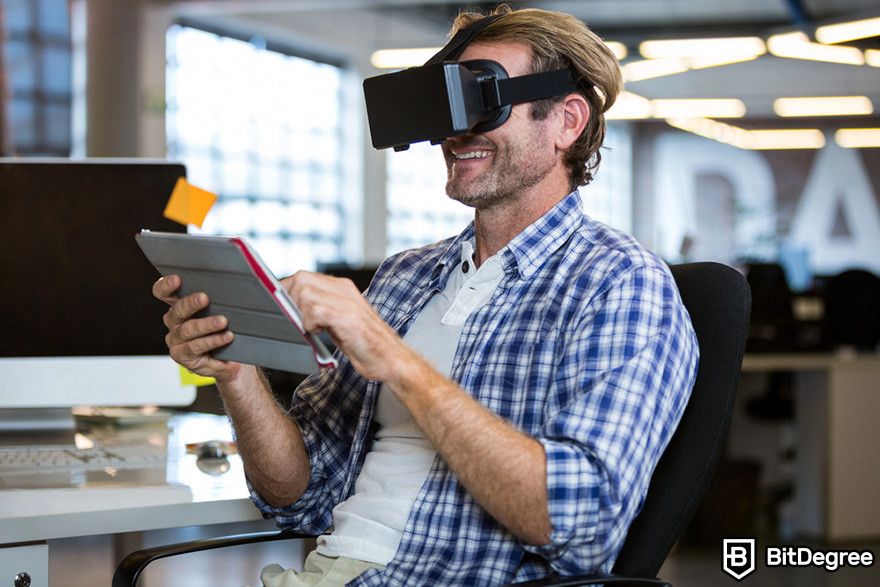
By distributing rendering tasks across multiple GPUs, the network ensures that VR and AR developers can create more realistic and engaging content. This capability is crucial for the advancement of VR and AR technologies, making "What is Render crypto?" a key player in these innovative fields.
Scientific Research
Scientific research often involves complex simulations and visualizations, such as in fields like astronomy, medicine, and physics. These tasks require significant computational resources. By using the Render Network, researchers can offload these heavy rendering tasks, enabling them to focus more on their core research activities.
This not only accelerates the research process but also makes high-quality visualizations more accessible to the scientific community. In this context, "What is Render crypto?" is seen as a tool that empowers scientific discovery and innovation.

The diverse use cases of Render crypto demonstrate its versatility and potential to revolutionize multiple industries. Whether it's gaming, film, architecture, VR, advertising, or scientific research, the Render Network and its native RNDR token offer powerful, cost-effective rendering solutions.
Benefits of Using Render Crypto
When exploring "What is Render crypto?", it's important to understand the various benefits it offers. From cost-efficiency to decentralization, Render crypto is transforming the way digital content is created and processed. Let's delve into these advantages in more detail.
Cost-Efficiency and Speed
One of the most significant benefits of using Render crypto is its cost-efficiency and speed. Traditional rendering methods often require substantial investment in hardware and software, not to mention the ongoing operational costs.
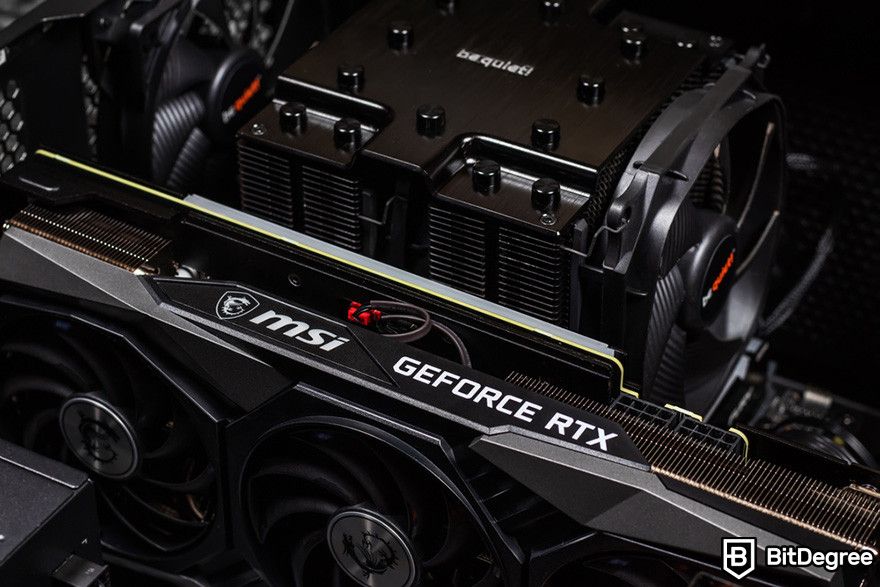
With the Render Network, Creators can tap into a decentralized pool of GPU resources, paying only for what they use. This dynamic pricing model ensures that rendering tasks are completed quickly and at a fraction of the cost of traditional methods.
When you're considering "What is Render crypto?", think of it as a way to get high-quality rendering without the hefty price tag. The network's efficient allocation of resources means faster turnaround times, allowing creators to meet tight deadlines and deliver projects more promptly. This speed and cost-effectiveness are game-changers for industries like gaming, film, and design.
Decentralization and Security
Another crucial benefit of Render crypto is its decentralization and security. The Render Network operates on a blockchain, ensuring that rendering tasks and transactions are transparent and secure. This decentralized approach eliminates the risks associated with single points of failure, making the network more resilient to attacks and technical issues.

As I mentioned earlier when answering “What is Render crypto?”, it functions as the currency within this secure ecosystem. Transactions are recorded on the blockchain, providing an immutable ledger that enhances trust among users. This level of security is particularly important for industries that handle sensitive data and require high levels of confidentiality.
Impact on Creative Industries and User Empowerment
Render crypto is also making a significant impact on creative industries and empowering users. By democratizing access to powerful rendering resources, the Render Network allows smaller studios, independent creators, and freelancers to compete with larger, well-funded companies. This level playing field fosters innovation and creativity, enabling more diverse and unique projects to come to life.
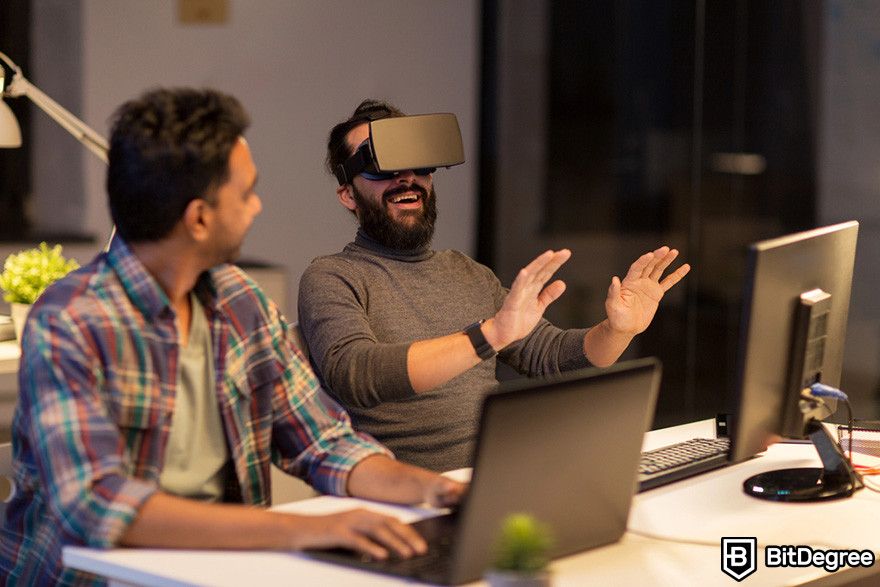
When thinking about "How to buy Render token?", consider the broader implications of this technology. By supporting the Render Network, you're contributing to a more inclusive and accessible creative ecosystem. The empowerment of individual creators is a key aspect of answering "What is Render crypto?", as it provides opportunities for artists and developers who might otherwise be limited by resource constraints.
Challenges and Criticisms of Render Crypto
While exploring "What is Render crypto?", it's important to also consider the challenges and criticisms it faces. Despite its many advantages, Render crypto is not without its hurdles. Let's take a closer look at some of the key issues.
Market Volatility
Like most cryptocurrencies, RNDR is subject to price fluctuations. This market volatility can be particularly risky for creators who need to budget for rendering costs. If the value of RNDR drops significantly after a project is quoted, creators might find themselves facing unexpected expenses.
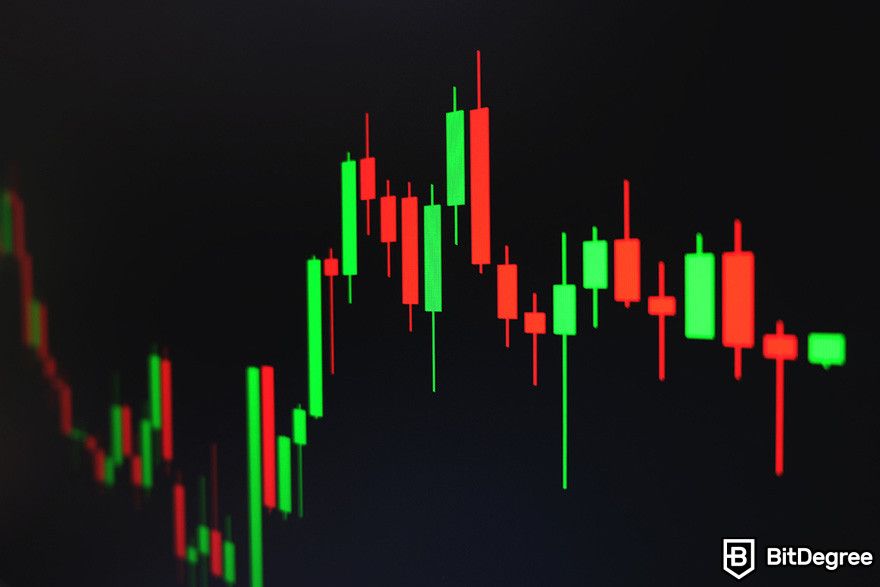
Meanwhile, if the value spikes, it could make the service too expensive for some users. Understanding “What is Render token?” includes recognizing these financial risks, which are inherent to the cryptocurrency market. When you're thinking about "How to buy Render coin?", it's crucial to keep this volatility in mind and plan accordingly.
Technical Challenges
Integrating blockchain and AI technologies within the Render Network presents several technical challenges. Issues related to data privacy, interoperability with other systems, and overall network security can complicate the smooth functioning of the network.
Ensuring that user data remains secure while maintaining the efficiency of the rendering process is a delicate balance. These technical complexities are a significant part of "What is Render crypto?" and can affect its adoption and reliability.
Regulation
The decentralized nature of the Render Network raises potential regulatory hurdles. Different countries have varying regulations regarding cryptocurrency and decentralized platforms, which could impact the network's growth and adoption.

Regulatory uncertainty can pose a significant challenge, as it might limit where and how the Render Network can operate. For those exploring "How to buy Render coin?" staying informed about regulatory changes is crucial to understanding the broader landscape in which RNDR operates.
Competition
The Render Network operates in a competitive space, with established cloud-based computing services already serving a large user base. To stay relevant and attract users, RNDR needs to continuously innovate and expand its network.
This competition can be tough, as many traditional platforms already have the trust and loyalty of their users. So, when considering "What is Render crypto?" it's essential to acknowledge that it must constantly prove its value and effectiveness against these well-established competitors.
Scalability
As the Render Network grows, maintaining its efficiency and speed could become increasingly challenging. More complex rendering tasks and a higher volume of users might strain the network's resources. Scalability is a common issue in decentralized networks, and ensuring that Render crypto can handle growth without compromising performance is vital. This scalability challenge is a key consideration when examining "What is Render crypto?"
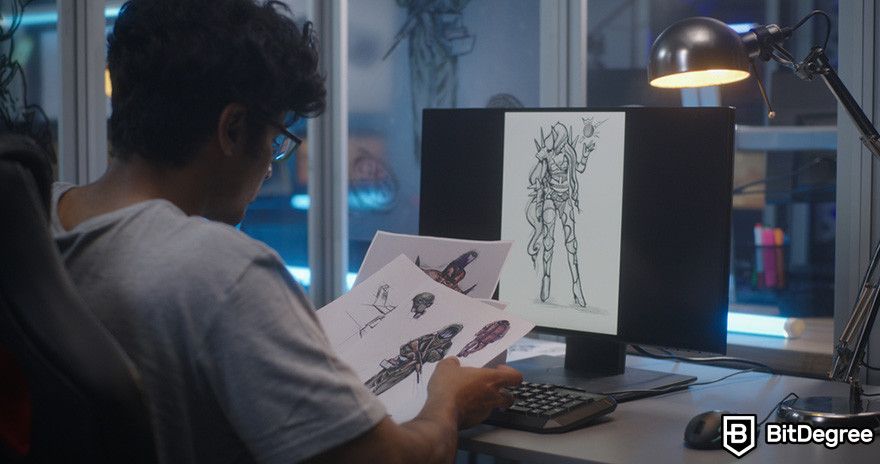
Network Effects
The value of RNDR heavily relies on the widespread adoption by both creators and node operators. If there are not enough creators submitting rendering tasks or node operators providing computational power, the network's growth potential could be limited. This reliance on network effects means that attracting and retaining users on both sides is critical for the sustained success of Render crypto.
In short, while the RNDR token offers innovative solutions and numerous benefits, it also faces significant challenges. Market volatility, competition, technical complexities, regulatory hurdles, scalability issues, and the need for strong network effects are all critical factors that impact its adoption and success. Understanding "What is Render crypto?" means acknowledging these potential obstacles and considering how they might influence the future of this promising technology.
How to Get Started with Render Crypto
Now that you’ve got a clear grasp on what is Render token and how the Render Network works, it is time to learn how to participate in this ecosystem. In this section, I will walk you through the step-by-step processes to become either a Node Operator or a Creator within the Render Network.
I will also give you an easy tutorial on how to buy Render token in Binance if you want to invest in this blockchain-based rendering platform.
How to Get Started as a Node Operator
You can join the Render Network as a Node Operator as long as you have adequate hardware specifications. Here are the requirements you need to fulfill:
| Hardware | Requirements |
|---|---|
| GPU | CUDA-enabled NVIDIA GPU. Minimum VRAM: 6GB, recommended VRAM: 8GB |
| RAM | At least 32GB |
| Disk space | At least 100GB |
| Internet connection | Stable internet connection to download and upload assets |
Table: The hardware requirements for a node in the Render Network.
Once you’re sure that your rig meets the required specifications, you can fill out a form to connect your node to the Render Network. After that, you will be added to an onboarding queue. You’ll get an instruction email from the Render Network to set up your node. Basically, all you have to do is install the Render Network Client and connect it to your ETH wallet.
How to Get Started as a Creator
If you are an artist and want to join the Render Network as a creator, you’ll have to purchase an OctaneRender Studio+ subscription or a box license. The subscription price is €23.95/month for the monthly plan or €239.88/year for the annual plan.
To start rendering using the network, go to rndr.x.io and log in using your OTOY account. To render your project, you’ll have to export your scene to an ORBX format using OctaneRender Standalone or any of the supported OctaneRender plugin integrations.
After that, open the Render Network then click the “Create a Job” button. Fill out all the necessary details and options on this page and generate a cost estimate. This is a crucial step during your rendering process because it prevents you from overspending your RNDR token or credit.

- Secure and reliable
- Accepts fiat currencies
- Lots of trading options
- Reputable exchange
- Accepts fiat currencies
- Offers various trading options

- Huge trading variety
- Regulation-compliant around the globe
- Fair trading fees
- Beginner-friendly
- A wide array of features
- Vast number of different crypto coins & tokens

- Beginner-friendly
- Secure
- Decent trading and withdrawal fees
- Crypto.com Visa Card
- Automated tools & bots
- Ecosystem synergy with CRO
How to Buy Render Token
Another way to join and support the Render Network without being either a Node Operator or a Creator is to buy the RNDR token. You can buy this crypto from a reputable exchange. In this section, I’ll show you the step-by-step guide on how to buy Render Token from Kraken:
Step 1: First, create a Kraken account if you don’t have one. Then, log in to access the dashboard.

Step 2: On your dashboard, choose “Explore all assets”.
Step 3: Search for “Render” and click “Buy”.

Step 4: Choose your payment method and enter the amount you want to buy.
And that’s it! The process of buying a Render token from Kraken is super easy. Keep in mind that the crypto market is very volatile, so I recommend consulting with a professional financial advisor before investing in any cryptocurrency.
Conclusions
Throughout this article, I've explored "What is Render crypto?" from various angles to provide you with a comprehensive understanding. We've delved into the technology behind the Render Network, its tiering system, and the roles of Node Operators and Creators. I've highlighted the diverse use cases across industries like gaming, film, architecture, and VR, demonstrating the network's versatility.
We've also examined the benefits of using Render crypto, such as cost-efficiency, speed, decentralization, security, and its empowering impact on creative industries. However, it's important to recognize the challenges and criticisms, including market volatility, competition, technical complexities, regulatory hurdles, scalability, and the need for strong network effects.
If you're interested in joining this innovative ecosystem, you might be wondering how to buy Render coin. You can find RNDR on popular exchanges like Kraken, making it accessible for anyone looking to participate.
Understanding "What is Render crypto?" is crucial in appreciating its potential to revolutionize digital rendering. Whether you're a creator, developer, or investor, Render crypto offers exciting opportunities and solutions in the ever-evolving world of blockchain technology.
The content published on this website is not aimed to give any kind of financial, investment, trading, or any other form of advice. BitDegree.org does not endorse or suggest you to buy, sell or hold any kind of cryptocurrency. Before making financial investment decisions, do consult your financial advisor.
Scientific References
1. Zhang P., Schmidt D. C., White J., et al: Chapter Seven - Consensus mechanisms and information security technologies.
